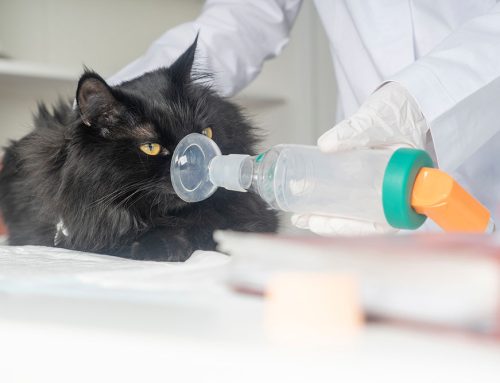If your pet’s eye is red, you may wonder if you should seek immediate veterinary care or if monitoring the situation at home is OK. Numerous issues can cause pet eye redness, some more serious than others. Our West Vets Emergency Veterinary Clinic team explains some of the most common causes of eye redness in pets and how you should respond if your four-legged friend is affected.
Pet eye redness causes
Pet eye redness is typically caused by irritation or inflammation to part of the eye. Common causes include:
- Allergies — Environmental allergens, such as dust, tree or plant pollen, and mold, can lead to an allergic reaction that results in red eyes. Affected pets also typically have itchy, irritated skin.
- Infection — Bacterial, viral, and fungal infections can lead to eye redness. Other signs may include tearing and excessive blinking because eye infections are usually uncomfortable.
- Corneal injury — Trauma to the eye that causes corneal ulcers or abrasions can lead to eye redness, as well as excessive blinking, tearing, and mucoid eye discharge. Corneal injuries can quickly worsen and potentially result in vision loss.
- Keratoconjunctivitis sicca (KCS) — KCS, also known as dry eye, is a common condition in dogs caused by inadequate tear production to lubricate the cornea, which leads to corneal irritation. Secondary corneal abrasions are common if the condition isn’t treated appropriately.
- Entropion — Some pet’s eyelids turn inward and the eyelashes and hair rub against the cornea, which results in irritation and redness. Surgery may be necessary to correct the abnormality.
- Uveitis — Inflammation inside the eye caused by issues such as infection, metabolic disease, injury, or eye tumors, can result in eye redness.
- Glaucoma — Elevated eye pressure can cause eye redness and corneal cloudiness and lead to blindness.
When pet eye redness is an emergency
Any condition that causes redness in a pet’s eye should be evaluated by a veterinarian, because ocular problems can escalate quickly. Indications that your pet needs emergency care for their red eye include:
- Severe or worsening eye redness, swelling, or discharge
- Excessive squinting, blinking, or pawing at the eye
- Corneal cloudiness
- Changes in pupil size
- Bleeding or trauma to the eye
- Vision loss
Pet eye redness diagnosis
Veterinarians use several diagnostics to determine the cause of a pet’s red eye. Your pet’s diagnostic work-up may include:
- History — Knowing your pet’s medical history is helpful to determine if any pre-existing conditions could contribute to their red eye.
- Physical examination — A complete physical examination is necessary to ensure your pet has no other illness signs.
- Ocular examination — Your veterinarian will assess your pet’s cornea, lens, and retina with an ophthalmoscope.
- Fluorescein stain — This special stain is used to determine if your pet’s cornea is damaged.
- Schirmer tear test — This test measures your pet’s tear production.
- Tonometry — A special instrument is used to measure your pet’s ocular pressure.
Pet eye redness treatment

Your pet’s treatment will depend on the cause of their eye redness and may include:
- Eye drops or ointments — Many pet eye conditions are treated with eye drops or ointments. In some cases, treatment is needed multiple times a day, and pets affected by KCS and glaucoma will need lifelong eye care.
- Pain medications — Certain eye conditions are painful, and your pet may need medications to help manage their discomfort.
- Cleaning — If your pet has ocular discharge, keep the under-eye area clean with a warm, soft cloth to prevent irritation and tissue scalding.
- Surgery — Surgery may be necessary to correct the problem causing the eye redness. If the issue can’t be effectively managed, your veterinarian may recommend removing your pet’s eye to prevent ongoing pain.
If your pet experiences an eye emergency, contact our West Vets Emergency Veterinary Clinic team, so we can take the necessary steps to protect their vision.







Leave A Comment